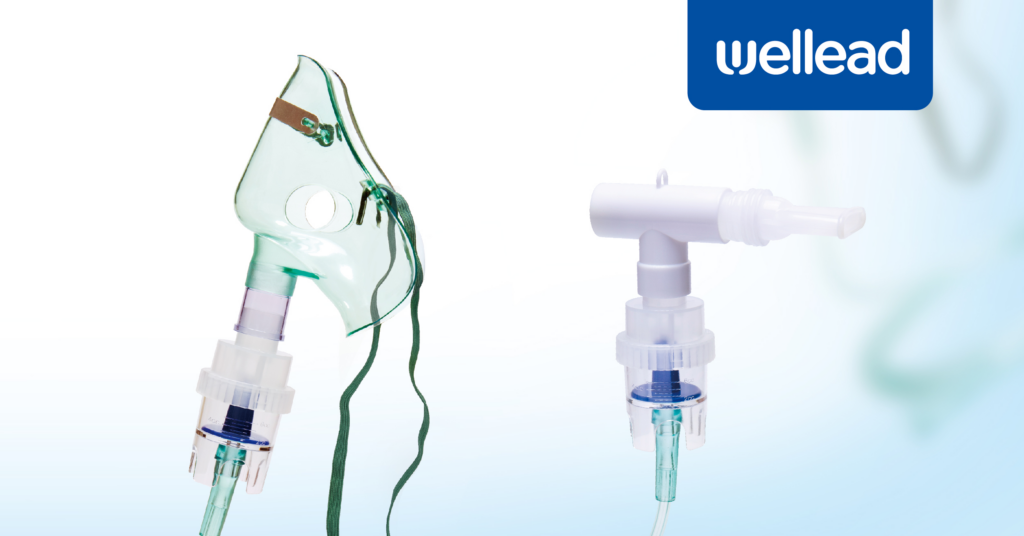An aerosol therapy is a respiratory therapy technique that is used to deliver medication directly into the airways or lungs by using a compressor or nebulizer. The medicine goes in the lungs in the form of mist.
This technique is commonly used to treat various respiratory illnesses such as COPD, asthma, and cystic fibrosis. It is also used as an alternative method of drug administration in critically ill patients.
In this comprehensive article, we’ll uncover everything about aerosol treatment, focusing more on how aerosol therapy works, what nebulizers do, and what their benefits are.

Fundamental Principles of Aerosol Therapy
Respiratory diseases are among the leading causes of critical illness. The use of aerosol therapy to administer drugs is an attractive method with minimal side effects. A compressor or nebulizer converts the medicine into tiny inhalable particles, which are then delivered directly as the patient breathes.
The most commonly used medications for aerosol therapy are bronchodilators, antibiotics, antiviral drugs, or corticosteroids.
Advantages of Aerosol Therapy
- If we compare the aerosol doses with systemic ones, they are much smaller.
- The onset of action of drugs is much faster.
- Compared with parental or oral therapy, aerosol therapy has much fewer systemic side effects.
- The target delivery of the administered drug is the respiratory system, largely bypassing systemic first-pass metabolism.
- Aerosol therapy is relatively convenient and painless.
Key Factors Influencing the Effectiveness
- Drug-related factors: including aerosol particle diameter, aerosol density, drug viscosity and surface tension, and formulation state. The ideal particle diameter is 1-5 µm for deposition in the lower airways.
- Patient-related factors: cognitive and cooperation abilities, breathing pattern, and underlying disease status.
- Nebulizer Device Selection: The choice of nebulizer device is also a key factor.
Main Types of Nebulization Equipment
(1) Nebulizer Machine
Nebulization equipment comes in both portable and tabletop models. However, depending on the functionality of the equipment, there are three main types of nebulizers:
- Jet: This nebulizer uses compressed gas to form tiny particles of administered medication in the air (aerosol).
- Ultrasonic: This type uses high-frequency vibrations to make aerosol. The particles formed by the ultrasonic nebulizer are larger compared to those formed by the jet nebulizer.
- Mesh: The administered liquid drug passes through the mesh. The mesh is very fine and produces the smallest particles. This type of nebulizer is the most expensive of all.
Selection Criteria:
It’s important to consider the following selection criteria for selecting the right nebulizer for aerosol therapy.
- Look for drug formulation compatibility.
- Consider the patient’s age and ability to coordinate breathing, and then choose accordingly.
- Clinical setting (such as hospital, clinic, or home).
- Equipment portability and maintenance requirements.
(2) Drug Delivery Interfaces
Different types of aerosol drug delivery interfaces are available in the market. Among them, these are the most commonly used:
- Mouthpiece: A rigid or flexible tube fitted to the outlet of a nebulizer, held between the lips to form a seal. Aerosolized medication passes directly through the oropharynx into the lower airways. In vitro and clinical studies demonstrate approximately two-fold greater lung deposition versus facemask, making it ideal for adults and cooperative children over age 3.
- Aerosol Mask: A soft, anatomically contoured mask that covers the nose and mouth and attaches to the nebulizer outlet. It allows passive inhalation of aerosolized particles, suitable for uncooperative patients, young children under 3, or anyone unable to seal a mouthpiece. Proper fit and minimal dead space are key to optimizing drug delivery.
Procedures for Aerosol Therapy
Proper use of aerosol therapy is important for achieving great results. Here are some procedure tips for nebulizer aerosol therapy:
Before Aerosol Therapy
- Check the medication prescribed for the aerosol therapy, and also verify its dose.
- Make sure that the aerosol nebulizer is cleaned well, and it is assembled correctly.
- If you are using the nebulizer for the first time in a clinical setting, explain the process to the patient properly and ensure cooperation.
- Always check for contraindications like severe cardiac instability.
During Aerosol Therapy
- Make the patient sit in an upright position. It maximises the expansion of the lungs.
- Guide the patient to take slow and deep breaths and have brief holds in between. It’ll improve the deposition of drugs.
- While the patient is having aerosol therapy, the clinician should monitor for any side effects such as tremors, tachycardia, or coughing.
- After some time, keep checking the aerosol output to make sure the device is working properly.
After Aerosol Therapy
- Ask the patient to clean their mouth, as it decreases the risk of oral thrush.
- Record the details of the therapy. Note down the drug used, dosage, duration, and the patient’s response.
A Note From Well Lead Medical
Well Lead Medical provides high-quality respiratory care devices, like:
Nebulizer with Mouthpiece: offering more choices of T piece and mouthpiece
Nebulizer with Aerosol Mask: our aerosol nebulizers with masks are available in different sizes and suit both adult and paediatric patients.
Well Lead Medical has been serving hospitals and clinicians for over two and a half decades in more than 100 countries. Our solutions are focused on patient safety and clinical effectiveness to meet the growing demands of reliable Nebulization equipment in both hospitals and homes.

